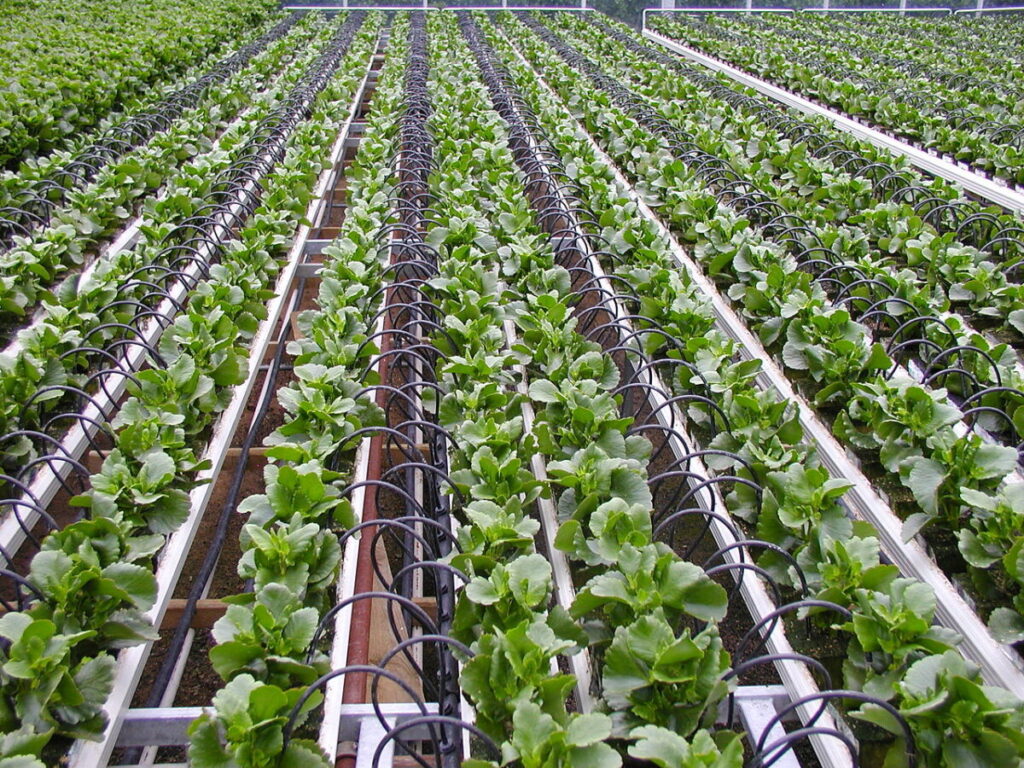The proposed system uses compressed air to store energy and prevent clogging of the irrigation pipes. Two experimental systems were built and tested in China and clogging was reduced by as much as 93%.
Researchers from China’s Northwest A&F University have developed a new drip irrigation system powered by PV that stores energy in the form of compressed air. The use of compressed air not only regulates the performance of the system, but also ensures uniformity in the irrigation outflow and improves the anti-clogging of the pipes.
“Photovoltaic drip irrigation is an essential approach to meeting irrigation needs in regions with limited water resources and energy shortages, thus ensuring the provision of livelihoods and horticultural products for local residents,” the academics said. “However, the susceptibility of the drip irrigation system to blockages and the fluctuations in photovoltaic output can have a significant impact on irrigation quality.”
To maximize the system’s water-energy balance, the researchers used a sealed pressure tank with a mixture of air and water. That tank is located between a pump and the drip tubes. The tank is initially filled with air, and once solar energy is available, the pump pushes water into the tank, effectively compressing the air within it. Once a certain pressure is reached, a valve opens, releasing the stored water in pulses. As soon as water is released, the air expands again, allowing the cycle to repeat.
The experimental systems
“During the cycling process, the volume of air in the pressure tank undergoes expansion during each pulse drip irrigation process, ensuring the consistency of both pulse jet time and discharge flow,” the group said. “Although the output of the solar panel and the water lifting performance of the pump vary due to variations in solar radiation or cloud occlusion during different periods of the day, these differences only change the water lifting and injection time of each pulse period at different times. of the day, without affecting the pulse jet process.”
To test the new system, the scientists built two experimental setups in Yangling, China. To analyze the hydraulic performance, they used a 374 W PV panel driving a 16 l/min pump. The pump drove water through a central pipe 48 meters long, to which were connected eight side pipes, each six meters long. Six emitters were placed on each pump, resulting in a total of 48 emitters in the entire system. A measuring cup was placed under each of them.
The second experimental system focused on anti-clogging performance. For this purpose, mud water with a sand content of 2 g/L flowed into four drip belts. One tape received its water directly from the contaminated water tank using a pump, while the three others had a pressure tank between the pump and the tape. In the later three, the system used the same water-air pressure technology as in the first setup.
The results
“The system operates in the intermittent cyclic drip irrigation mode, where the emitter flow rate varies as a power function of the peak pressure to ensure a flow uniformity of not less than 91.76%,” the group explains. “In addition, the dynamic pulse pressure generated by the system significantly improves the anti-clogging performance of the emitter. During more intensive clogging tests, sediment deposition in the lateral pipe was reduced by 78.95% – 93.36% compared to continuous, constant pressure drip irrigation systems.”
In addition, the team conducted an economic analysis of the system, finding that the system will cost $373.13 to implement, which is equivalent to the initial investment of $103.84 in traditional drip irrigation. However, only considering energy consumption and environmental benefits can result in annual operating benefits of up to $19.41 per mu, which is the traditional Chinese unit of land area, equivalent to approximately 667 m2.
“The system provides substantial economic and environmental benefits without significant increases in system investment costs while providing clean, readily available energy for efficient operation of drip irrigation systems, making a positive contribution to food security,” the scientific team concluded.
The system was presented in “The integration of solar energy and compressed air into the energy supply system improves the environmentally friendly and efficient operation of drip irrigation systems”, published in Agricultural water management.
This content is copyrighted and may not be reused. If you would like to collaborate with us and reuse some of our content, please contact: editors@pv-magazine.com.

